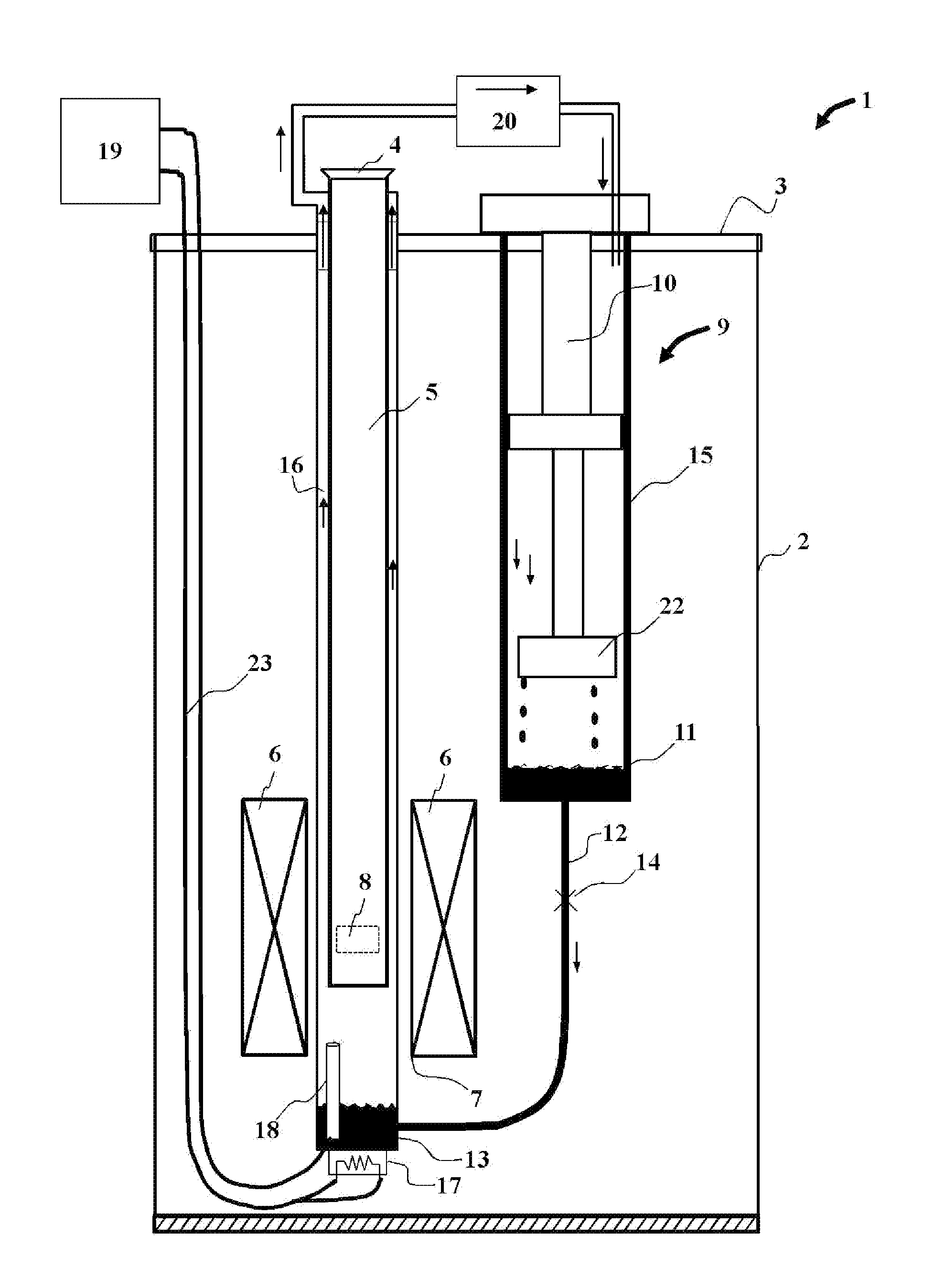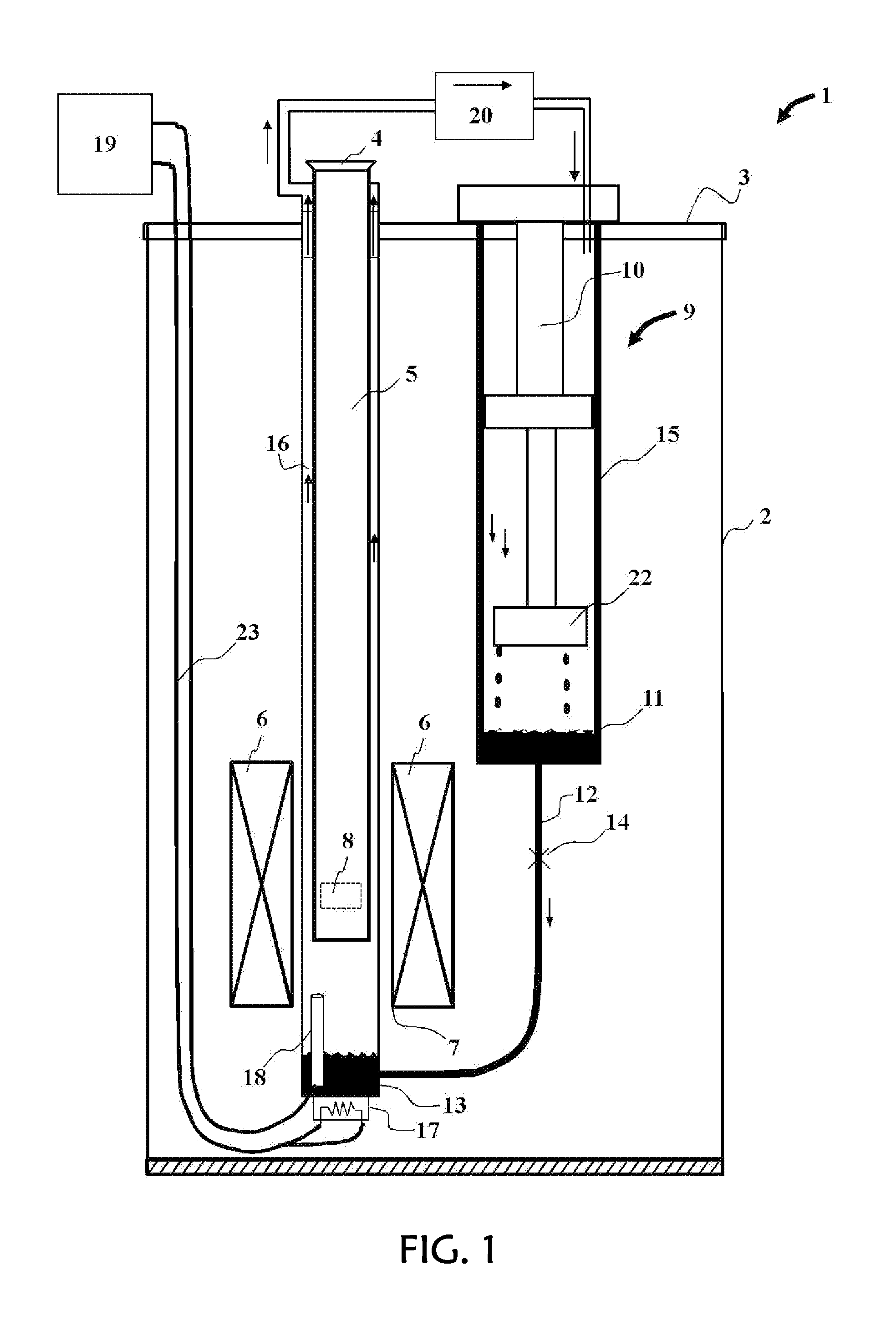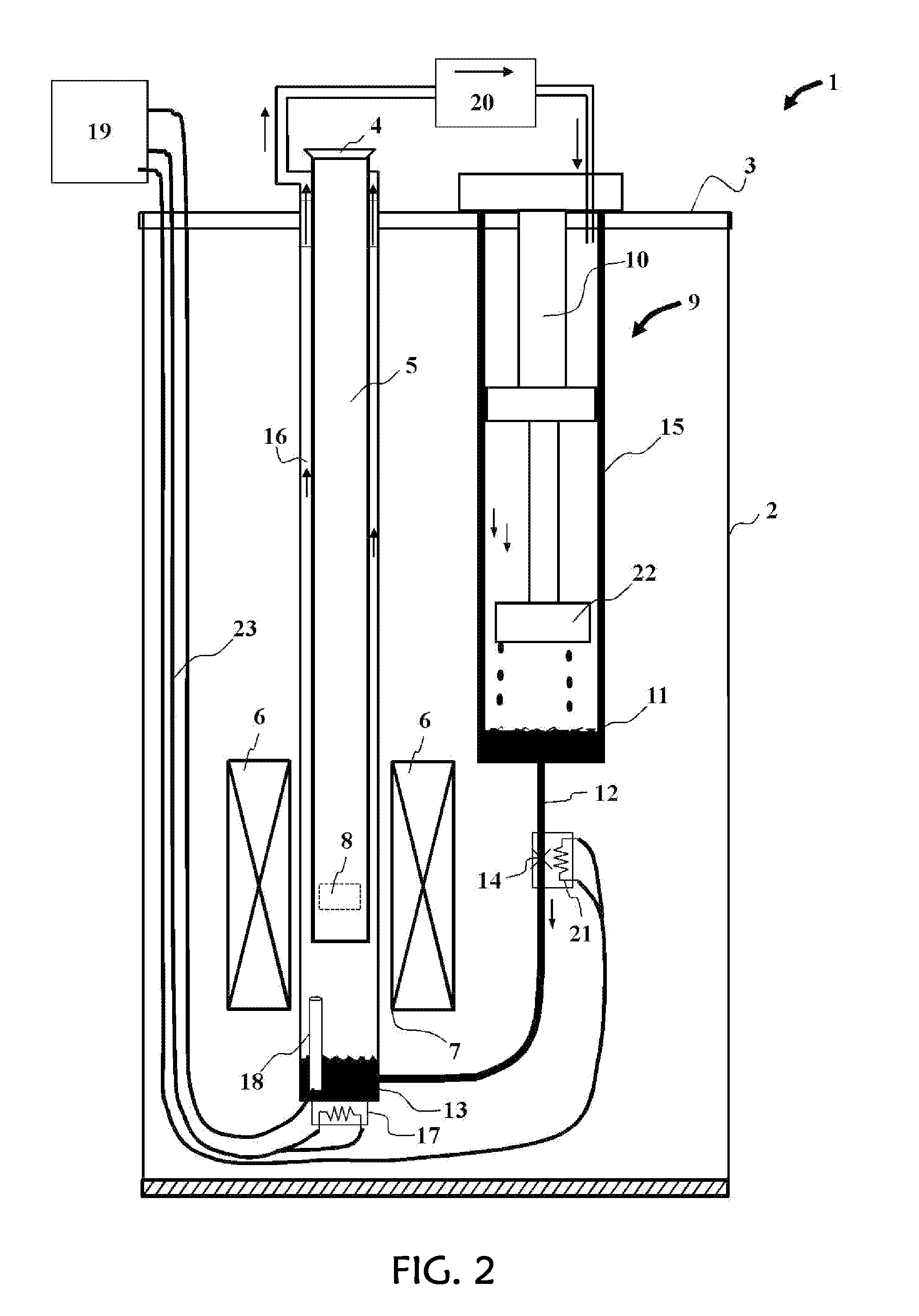Gas-flow cryostat for dynamic temperature regulation using a fluid level sensor
a fluid level sensor and cryostat technology, applied in the field of cryostats, can solve the problems of increasing the boiling temperature, overfilling the reservoir, and consuming a lot of time, and achieve the effect of high temperature stability and gas-flow stability
- Summary
- Abstract
- Description
- Claims
- Application Information
AI Technical Summary
Benefits of technology
Problems solved by technology
Method used
Image
Examples
Embodiment Construction
[0029]An exemplary embodiment of the apparatus of this invention is illustrated in FIG. 1, wherein a cryostat apparatus 1 comprises an outer vacuum chamber or outer shell 2 closed at the top by means of a top element or plate 3. While the shell 2 is shown as a distinct component from the top plate 3, in practice these two may be integral. The region outside this shell is usually at ambient temperature and pressure in air, while the volume inside this outer shell is evacuated so as to provide thermal isolation for, and between the various internal components. The top plate has openings for various penetrations into the interior of the cryostat, including a chamber access port 4 to provide access to the sample chamber 5.
[0030]Superconducting magnet 6 is shown with an inner bore 7 that houses the lower portion of the sample chamber, but is thermally isolated from it by virtue of the isolation vacuum. In this way, the temperature of the sample chamber may be varied independently from th...
PUM
 Login to View More
Login to View More Abstract
Description
Claims
Application Information
 Login to View More
Login to View More - R&D
- Intellectual Property
- Life Sciences
- Materials
- Tech Scout
- Unparalleled Data Quality
- Higher Quality Content
- 60% Fewer Hallucinations
Browse by: Latest US Patents, China's latest patents, Technical Efficacy Thesaurus, Application Domain, Technology Topic, Popular Technical Reports.
© 2025 PatSnap. All rights reserved.Legal|Privacy policy|Modern Slavery Act Transparency Statement|Sitemap|About US| Contact US: help@patsnap.com



